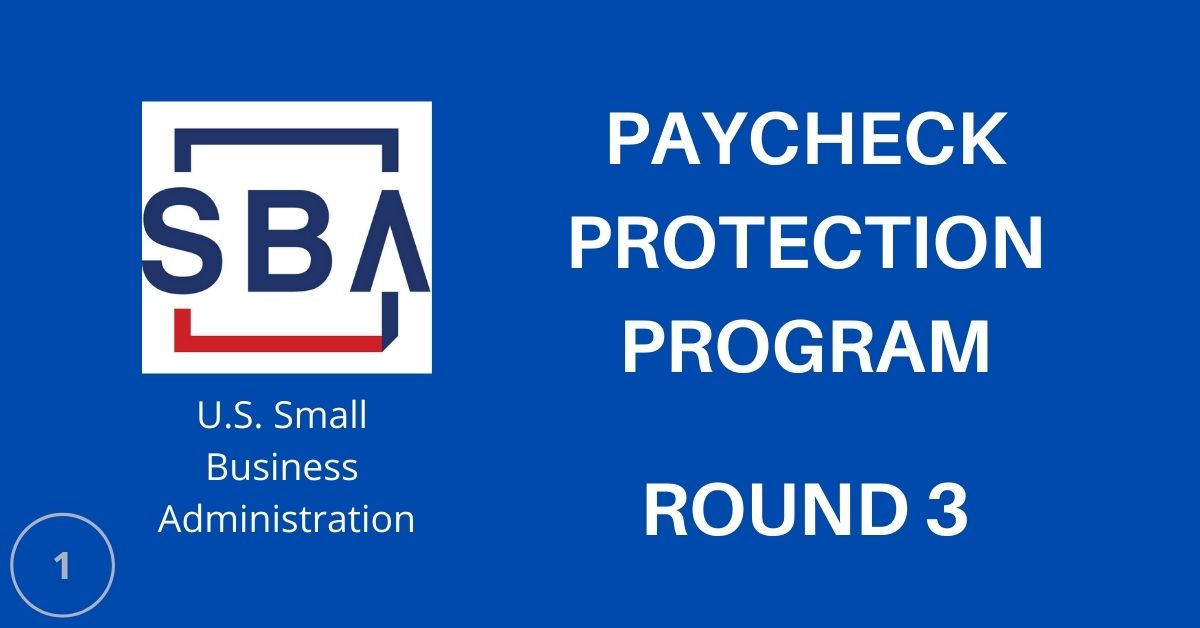Paycheck Protection Program Take Three? – Part 1

2020 has certainly been an interesting year. Thankfully, it is ending with a new federal act aimed at relieving businesses, industries, and individuals affected by the COVID-19 pandemic. It is known as the Consolidated Appropriations Act, 2021.
This Act consists of more than just a stimulus package. It also contains funding for the government through most of 2021. My previous post, Finally, More Money! – The Consolidated Appropriations Act, 2021, covered a broad overview of the stimulus package. This post will discuss the third round of the popular Paycheck Protection Program (PPP).
While this is the third round of funding for the PPP, it is only the second time a single business may apply for that funding. The second round of PPP funding went to qualifying businesses that missed out on money the first time.
Caution: There is Still a Necessity Test to Jump Through
Unfortunately, the Act kept the “necessity test” that is very difficult for most borrowers to meet. The test is one created by the Small Business Administration (the “SBA”) for other disaster loans that are limited in scope (think hurricanes and floods, not a worldwide pandemic).
The test requires borrowers to prove whether the loan is necessary to support their on-going operations. Most borrowers will not need to worry too much about the necessity test as the SBA has stated in prior guidance that it will not question the necessity test for borrowers taking PPP loans not exceeding $2 million.
However, there is some question whether an applicant’s applying for a second round of PPP funding will also waive this necessity test. But it’s likely the SBA will. Regardless, this guidance only applies to the SBA and does not stop any other agencies or persons from raising the issue.
If a borrower has any concerns regarding their business not meeting the necessity test, they should consult with their attorney and their CPA.
Second PPP Loan Overview
You may qualify for a second loan up to 2.5 times your business’s average monthly payroll costs unless your business is in the hospitality industry (restaurants and hotels).
Hospitality businesses may apply for a second loan up to 3.5 times their average monthly payroll costs. The maximum loan amount for third-round PPP loans is $2 million (down from $10 million under the original CARES Act).
If you received a PPP loan in the past ninety (90) days, the Act requires that the aggregate of the first and second loan not exceed $10 million.
Second PPP Loan Qualifications
If you are interested in taking out a second PPP loan, you still must qualify under the original PPP loan requirements. You must also meet additional requirements that include:
- Showing that there was a 25% or more reduction from gross receipts during the same quarter in 2019. Under current guidance, it appears that you can compare any quarter.
- Demonstrating that you have no more than 300 employees or meet an alternative size test.
Gross receipts will include all revenue from the normal operation of your business before the expenses but will not include any amounts borrowed, including prior PPP loan funds.
If you were not in business in the 1st, 2nd, and 3rd quarters of 2019 but were in business during the 4th quarter of 2019, you can compare the 1st, 2nd, or 3rd quarter of 2020 to the 4th quarter of 2019.
If you were not in business in 2019 but were in business by February 15, 2020, then you can compare your gross receipts during the 2nd or 3rd quarter of 2020 to the 1st quarter of 2020 to see if you qualify for funding.
Forgiveness of PPP
Both new loans and second-round loans may be entirely forgiven if spent for permitted purposes during the covered period. To obtain full forgiveness, you must spend at least 60% of loan funds on payroll costs. The remaining 40% of loan funds may be spent on qualified expenses during the covered period. Under the CARES Act, the list of eligible non-payroll expenses were rent, mortgage interest, and utilities.
Under the new Act, Congress expanded the list of eligible non-payroll expenses to include
Covered operations expenditures
- payments by a business for any software or cloud computing service that facilitates business operations
- product/service delivery
- payroll
- human resources functions, or
- accounting/tracking of supplies, inventory, and expenses
Covered property damage costs
- any expenses related to property damage caused by public disturbances (i.e., riots) in 2020 that were not covered by insurance or other compensation.
Covered supplier costs
- any expenses related to a supplier, purchase order, or order for goods that were in effect before the covered period essential to the borrower’s operations.
Covered worker protection expenditures
- expenses to help a borrower comply with federal, state, and local health and safety guidelines relating to COVID-19 starting on March 1, 2020.
- This would include personal protection equipment (“PPE”), ventilation or filtration systems, drive-through windows, expansion of outdoor spaces, and physical barriers.
Simple Forgiveness?
The Act takes another stab at making the forgiveness of PPP loans simpler. If you’ve been paying attention this summer, you’ll know that this is the last in a series of attempts to make the often cumbersome forgiveness process easier.
The Act will permit anyone who has a loan under $150,000 to submit a simple one-page form listing the loan amount, the number of employees retained, and the amount of the loan spent on payroll. The new form has not been released yet, but the SBA is required under the Act to release the form within seven (7) days of enactment of this Act.
However, this provision did not go as far as many businesses desired, which was automatic forgiveness for those with smaller loans.
Stay tuned for Part 2.
